 Using the Ugandan traditional barkcloth is a new and curious fashion trend in Europe. This fabric is unique, extravagant, and luxurious. Some fashion designers think that barkcloth can one day replace or at least be the alternative for leather. The outfits made from barkcloth are estimated by fashionistas because no single piece of tree-bark cloth is exactly alike, so your coat, bag, or jacket will definitely be one-of-a-kind.
Using the Ugandan traditional barkcloth is a new and curious fashion trend in Europe. This fabric is unique, extravagant, and luxurious. Some fashion designers think that barkcloth can one day replace or at least be the alternative for leather. The outfits made from barkcloth are estimated by fashionistas because no single piece of tree-bark cloth is exactly alike, so your coat, bag, or jacket will definitely be one-of-a-kind.
Read also: Ugandan traditional craft of barkcloth making. How to make fabric from tree bark
Fashion designer Bobby Kolade is showing off a signature fashion creation made from Ugandan tree-bark cloth – an over-sized coat that is actually much lighter than it appears. He points to parts of the cloth where branches and limbs once grew, creating natural tears during the cloth-making process, – they had to be meticulously stitched.
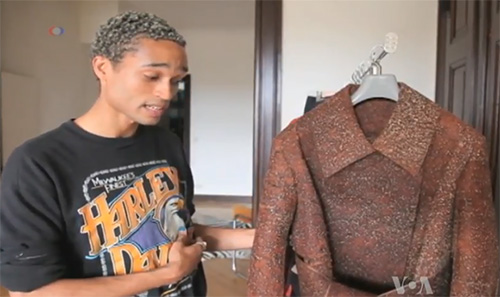
Bobby Kolade and his barkcloth coat
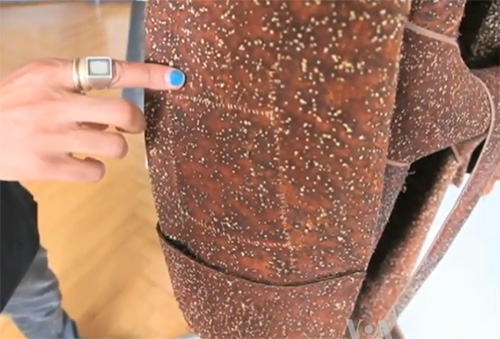
“And that's why you have certain parts where you see these sort of stitches all over. And that makes it very special”, says the young designer.
No single piece of tree-bark cloth is exactly alike and that, says Bobby Kolade, is what makes his pieces luxury items.
“They should be one-of-a-kind and I think that's sort of the kind of message I'm trying to, you know, give with this coat”, adds Bobby Kolade.
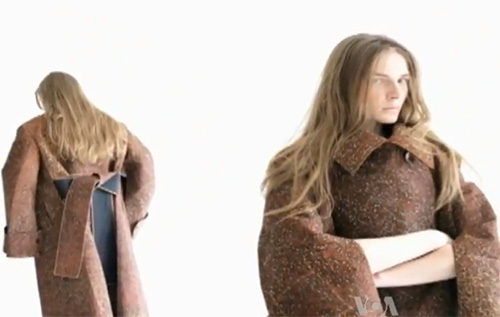
The fashion designer lives in Germany, where he recently featured his barkcloth designs in a runway show. He grew up in Sudan and Uganda, where the ancient craft of barkcloth making is so highly regarded that in 2008, the UN cultural agency – UNESCO – proclaimed it a cultural heritage of humanity.
Kolade says he is fascinated by how bark is stripped off a fig or matuba tree, the trees then wrapped in banana leaves to help protect it. The stripped bark is pounded with guava-tree mallets until it is about 1/10 its original width. It is dried in the sun, giving it a terracotta hue. But it can also be dyed many different colors.
In Uganda and other parts of Africa, it is used to make a range of textiles. In addition, Sanaa Gateja – famous African artist and jeweler – uses it in his art. “I love to use it because of its color and texture, and, of course, the story is very interesting for me and inspirational”, says Sanaa Gateja.
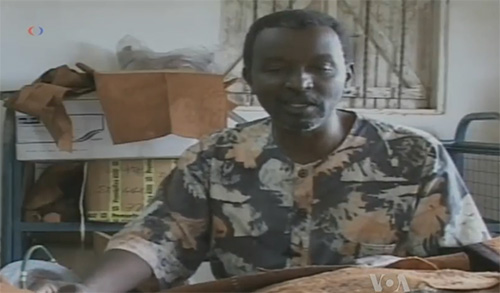
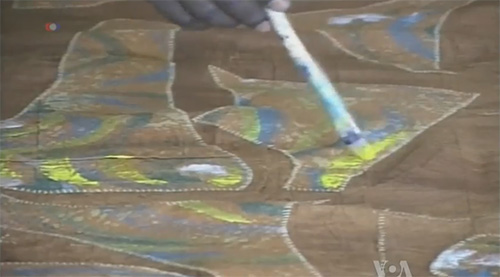
Sanaa Gateja and his work
Kolade works with farmers in Uganda to get the barkcloth and then, he modifies it. At this point, he says, it's not quite ready for snowy and rainy days.
“Obviously, to make it more adaptable to different weather conditions, we are going to have to use products from, for example, Brazil – latex from Brazil, for example”, Bobby Kolade explains how he makes his barkcloth clothing more durable.
Kolade says he even finds inspiration from the look of the barkcloth and uses that to create pieces like this silk jacket.
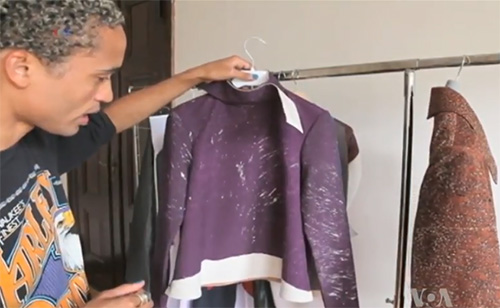
“We cannot reproduce it but what we can do is try to reproduce or emphasize the unique structure that it has”, adds Bobby Kolade.
He is hoping, one day, treebark cloth will be used as an alternative to leather.
“I'm really curious myself to see in what direction it's gonna go. I'm curious and I'm looking forward to the challenges as well”, says Bobby Kolade.
He hopes, ultimately, this ancient technique will be used to help create a brand new fabric of the future.
Read also: Ugandan traditional craft of barkcloth making. How to make fabric from tree bark
(c)


